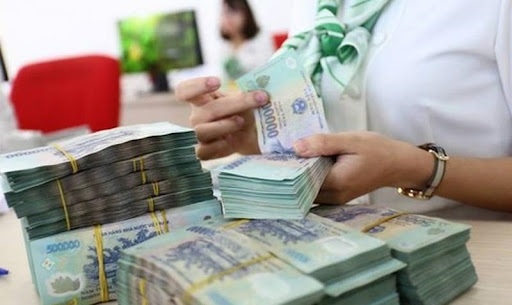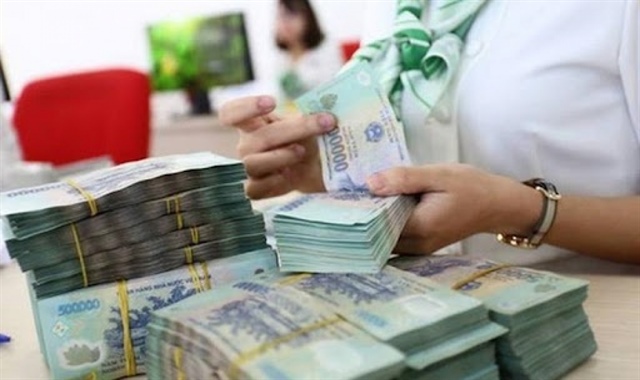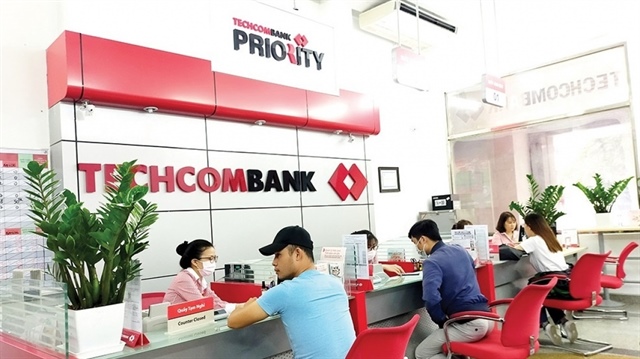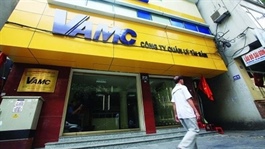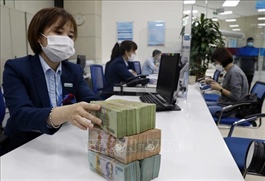Interest rates under growing pressure as credit expansion outpaces deposits
Interest rates under growing pressure as credit expansion outpaces deposits
Commercial banks are under mounting pressure as credit growth accelerates ahead of deposits, liquidity tightens, and exchange-rate fluctuations challenge efforts to keep interest rates stable through year-end.
The balance between deposit mobilisation and lending in the local banking system is expected to continue narrowing in the fourth quarter (Q4), as credit growth is anticipated to accelerate towards year-end and exceed deposit growth by approximately 3-3.5 per cent.
|
In mid-September, Lai Huong, a transaction officer at a bank in Hanoi, reluctantly watched one of her VIP clients transfer their deposits to another bank because the latter offered a higher deposit rate.
"Although we made every effort to persuade them, the interest rate was just not attractive enough, so we had to accept the situation. However, the scenario has changed in October because our bank has implemented a new interest rate mechanism, and we are now negotiating with the client," said Huong.
Such cases are not uncommon, given that banks' deposit interest rates are currently assessed to be very low, especially when customers compare them with inflation and their day-to-day cost of living.
Even a difference of just 0.2 per cent can prompt deposit flows to migrate from one bank to another, not to mention that the banking system's liquidity is currently under considerable pressure, as interbank borrowing rates among credit institutions have surged.
On this front, Can Van Luc, chief economist at state lender BIDV, observed that mobilising costs are trending slightly upward, as some banks adopt a variety of preferential schemes.
He attributed this to several factors. First, credit accelerated in Q3 and over the first nine months; second, liquidity across credit institutions is currently not abundant, given that deposits rose more slowly than credit (deposits increased by 9.74 per cent while loans increased by 13.4 per cent on-year) and deposit funds are shifting into higher-yield investment channels such as securities, real estate, and gold; and third, banks are stepping up efforts to mobilise deposits to meet liquidity safety ratios and because credit demand typically rises in the final months of the year.
“Forecasting through year-end 2025, base deposit interest rateswill remain stable, yet may increase at certain points,” Luc said.
Speaking to VIR, Ngo Dang Khoa, head of markets and securities services at HSBC Vietnam, noted that the key factors currently impacting interest-rate trends include the exchange rate; import–export conditions in the upcoming months as tariff-related impacts begin to show more distinctly on commodity prices, inflation and consumer demand in the US and other countries; credit growth, deposit mobilisation, and disbursement of public investment funds.
"The USD-VND exchange rate is still under upward pressure because payment demand is typically high in the final months of the year, and foreign investors on the stock market are continuing their net selling, so there is little scope for further rate cuts. However, inflation generally remains fairly stable and below target, hence pressure to raise interest rates is low. Overall, interest rates are likely to remain remarkably stable and fluctuate within a narrow band," said Khoa.
A senior executive at state lender BIDV commented that, regarding monetary policy, while the direction remains accommodative, recent messaging from the government and the central bank (SBV) has placed greater emphasis on macro-stability, inflation, and the exchange rate.
This is a timely and necessary shift, as pressure on the exchange rate has increased recently, while credit is currently being strongly promoted to support the economy. The SBV will administer open-market tools flexibly, and may adopt a more cautious stance during periods of exchange-rate escalation.
"Regarding VND liquidity, although support is expected from state funding to accelerate public investment disbursement towards the year-end, the pressure on liquidity remains substantial as cash outside the banking system tends to rise seasonally. Besides, support flows from state funds are being regulated not to be overly abundant in order to stabilise the exchange rate," said the BIDV executive.
In the summary reports submitted by the SBV to the National Assembly, the exchange rate and foreign-exchange markets are expected to continue facing considerable pressure from international factors.
The interest-rate environment faces multiple pressures going forward becauselending rates have already begun trending sharply downwards. Global interest rate levels are also on a downward path, albeit with the US Federal Reserve rate still high at 4-4.25 per cent, and global financial markets hard to predict under the influence of US tariff policy.
Lastly,loan demand for production, business, and consumption is projected to rise, while deposit mobilisation across the credit institution system may be affected and competition from alternative investment channels will exert growing pressure on the interest rate environment.
- 17:01 28/10/2025


